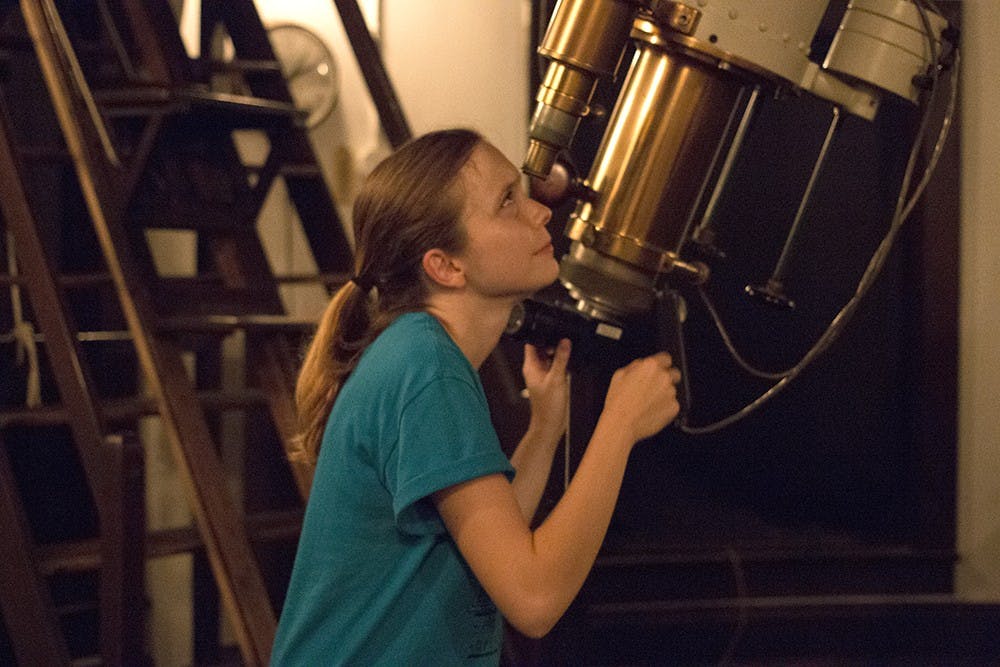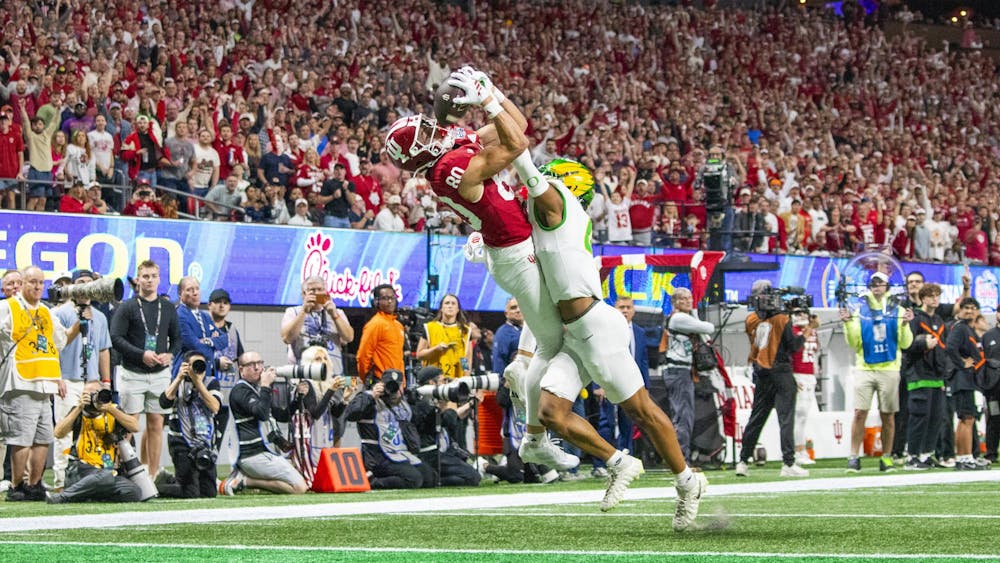IU doctoral student Karna Desai tugged on the rope and pully, crouching to the ground.
Cogs and wheels clinked together. Suddenly, the wooden, dome-like ceiling cranked open, exposing a sky fading from blue to black.
IU doctoral student Jamie Overbeek pointed a large, antique telescope at the skinny rectangle of sky.
“Can’t really see anything,” Overbeek said as she looked into the telescope, which was more than triple her size.
Every Wednesday after sunset the Kirkwood Observatory is open to students for observation of the atmosphere, weather permitting.
This past Wednesday, the open house was scheduled and cancelled at the last minute because of the clouds in the sky. Ideal conditions for stargazing include a dry climate on high grounds, Desai said.
As PhD candidates the IU astronomy department, Desai and Overbeek help oversee the operations of the observatory. However, Overbeek said, the tower isn’t used for research anymore.
Built in 1900, the observatory was key in the foundation of the University’s astronomy department. The first director of the observatory, John Miller, used the facility to study visual binary stars.
Today, the astronomy department uses a much larger, more advanced telescope to conduct research. It’s located on a mountain in Arizona.
But, Overbeek said, they study images on a computer screen that the telescope generates.
Overbeek moved a small, wooden wheel shaped like an antique ship’s wheel to direct the telescope upward.
She got into astronomy after studying physics but always remembered liking space. She said she would collect little NASA magazines when she was little.
Overbeek is writing her dissertation about star ?clusters.
Her favorite star cluster, she said, is star cluster NGC7789.
But most people just call it Caroline’s Rose, she said. It’s named after the woman who discovered it, Carolyn Herschel.
Desai researches how planets form and makes simulations of the ?processes.
They keep it simple when students come in, he said, basically explaining how planets rotate around the sun and which planets have rings.
The campus clock tower chimed 9 p.m.
“I was always fascinated about time,” Desai said.
He said its one of the reasons he started studying ?astronomy.
“There’s still no definition of time and there’s no definition of space,” he said.






